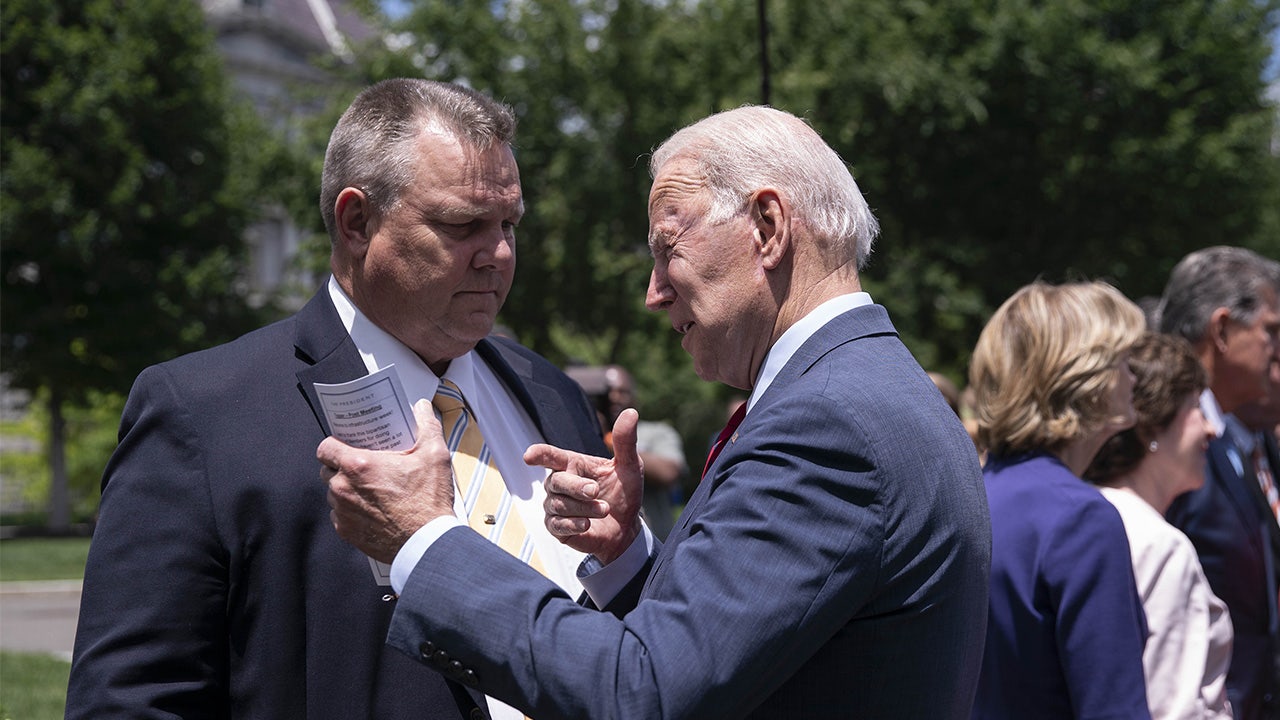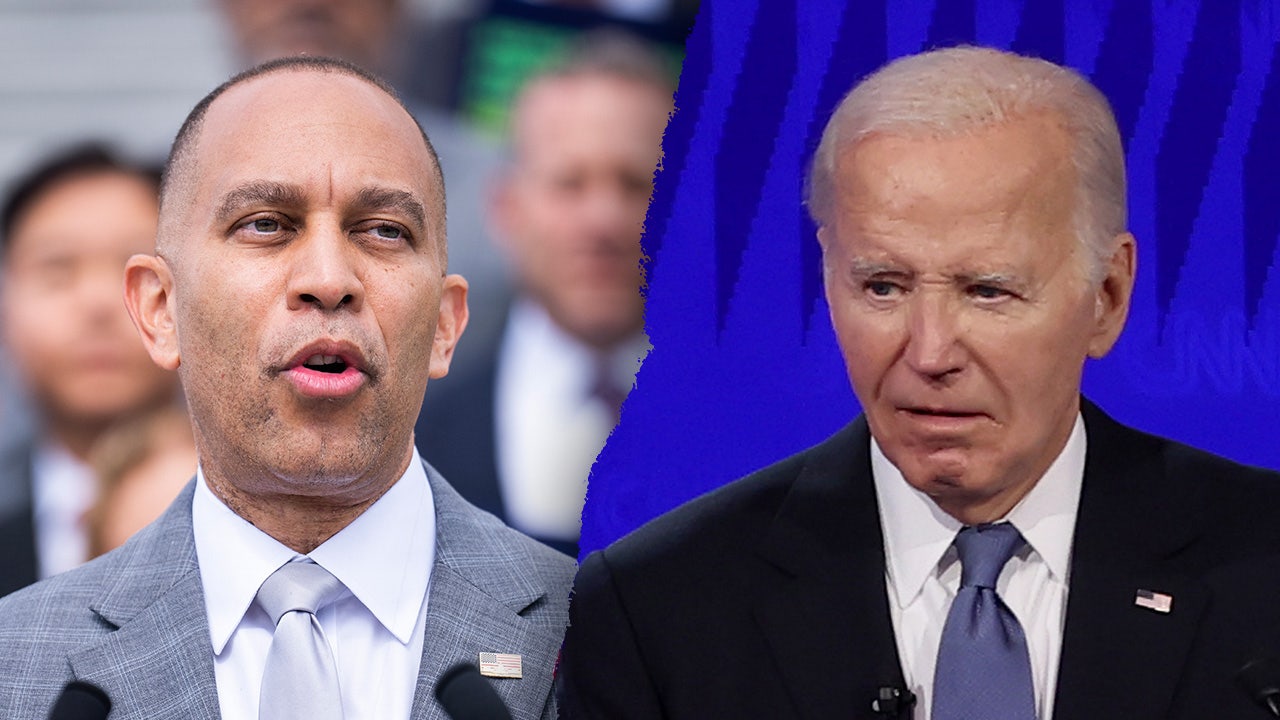Business
How the power of the Minions and Gen Z propelled the 'Despicable Me' franchise
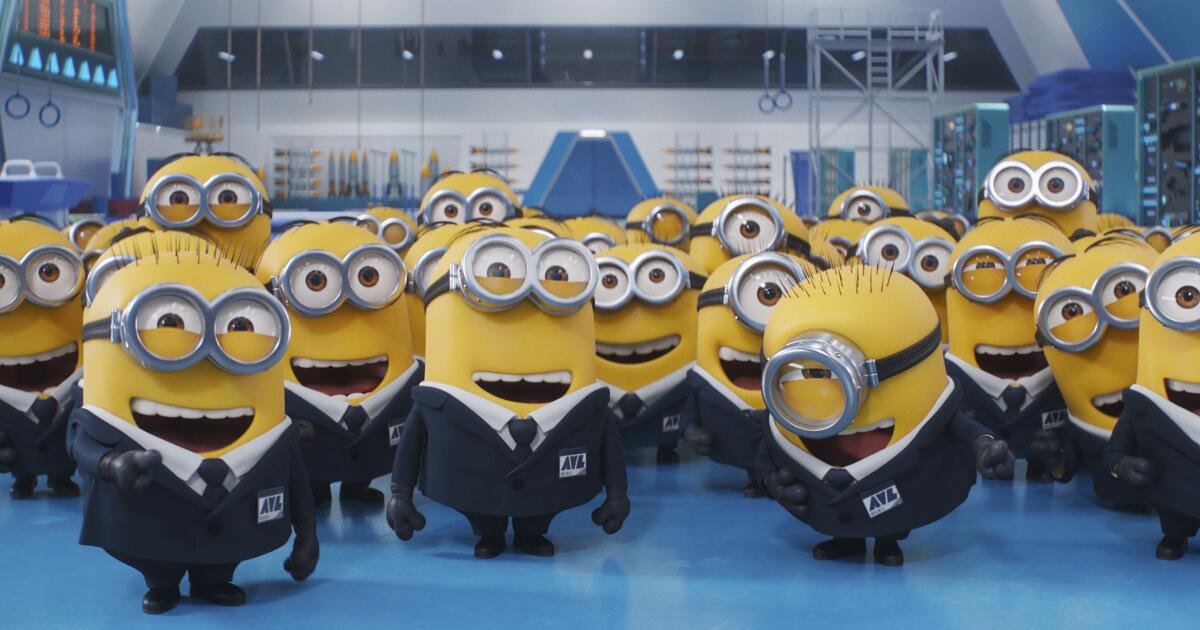
It was a spectacle (and for some, a menace) when droves of suit-clad young men showed up to theaters for 2022’s “Minions: The Rise of Gru.”
Against all odds, the #Gentleminions social media phenomenon showed that the Minions — up until that point, a staple of Facebook memes shared by very-online moms — could evolve as a cultural touchstone for that coveted demographic, Gen Z. The Minions had come full circle, staying relevant to the children who first met the yellow mischief-makers in 2010’s “Despicable Me” all the way through their young adult years.
It’s the kind of organic marketing that studios and theater owners can only dream of. Universal Pictures and Illumination Entertainment are counting on that multigenerational popularity to propel the franchise’s latest installment, “Despicable Me 4,” which comes out in theaters Wednesday.
So far, the signs are good. The movie is tracking to garner at least $100 million in ticket sales for the U.S. and Canada for the five-day Fourth of July extended weekend.
The last “Minions” movie broke Fourth of July domestic box office records and went on to make $940 million worldwide. This time around, families are already primed to hit the theaters with the recent success of Pixar’s “Inside Out 2,” which has now grossed more than $1 billion in global ticket sales.
“I’ve been 25 to 28 years in the business. I can’t remember something that created that much excitement for the audiences,” Francisco Schlotterbeck, chief executive of theater chain Maya Cinemas, said of the overall Minions craze. “The other thing I can compare it to is ‘Toy Story.’”]
Theaters have been eager for good news. Exhibitors earlier this year were walloped by a dearth of blockbusters, partly due to Hollywood’s long summer of strikes in 2023, which delayed multiple high-profile titles. Though a string of recent hits has brought relief, with “Bad Boys: Ride or Die,” “Inside Out 2” and “A Quiet Place: Day One,” domestic revenue remains down 19% from last year, according to Comscore.
“Despicable Me 4” is expected to continue the momentum. Maya Cinemas’ ticket pre-sale numbers for the sequel are trending up, and Schlotterbeck is expecting sales that are “triple of a normal week.” Family-friendly movies, like the “Despicable Me” franchise, do especially well with Latino audiences, he said, which his chain is geared toward.
After a tough first half of the year with limited films to show, he’s expecting better sales for the months ahead, especially with family films such as “Moana 2,” “Sonic the Hedgehog 3” and “Wicked” coming down the pipeline.
“All these big family titles will help,” said Schlotterbeck, whose chain has five locations in California and one in Las Vegas. “It’s pretty important to have these kind of very well-known franchises.”
Theaters are preparing for all kinds of Minions fans to flood the gates this weekend. Dine-in theater chain Cinépolis Luxury Cinemas USA plans to raffle off themed baby carriers that hold a popcorn bucket to tie in with supervillain Gru’s new role as a dad, said Luis Olloqui, company chief executive.
“Having the previous ‘Minions’ movie was really good, in terms of performance,” he said. “We saw that excitement among the people going to the movie dressing up and making it more of an event. This time, we are expecting kind of the same.”
The cross-generational popularity of the Minions stems from their cute appearances and humorous antics. But part of the appeal is also that they’re a bit of a blank slate, said Carrie Wilson-Brown, an instructor at the University of Illinois’ College of Media. In the same way that Sanrio icon Hello Kitty has advertised both motor oil and diamond necklaces and regularly wears all teams’ baseball caps, the Minions have become a canvas on which you can project whatever you want.
Minions are on all manner of merchandise these days. There are Minion Chia pets, Minion mugs, Minion sandwich makers and Minion toasters. For Los Angeles residents, there’s even the giant Minion that peeks over the edge of a Universal Studios parking structure to spy on the 101 Freeway (which has spawned memes of its own).
“You can infer anything out of it,” Wilson-Brown said. “They can even travel culturally, not from generation to generation, but from country to country because they don’t speak a particular language.”
It’s how the Minions joined the front lines of Facebook mom memes, which typically pair a picture of a Minion with unrelated sayings such as “I didn’t fall, the floor just needed a hug” or “I’ve been hiding from exercise. I’m in the fitness protection program.”
But the #Gentleminions craze was a turning point, when Gen Z consumers tried to take back the Minions of their childhood, Wilson-Brown said.
“You note your popularity specifically when you get internalized into meme culture,” she said. “In terms of ‘Despicable Me’ and the Minions specifically, all of a sudden, they kind of transcended out of the film into internet culture.”
Companies face a delicate dance while trying to court Gen Z audiences, who have expendable income they’re willing to plunk down on pop culture merchandise. Try too hard to appeal to them, and it seems inauthentic; try too little, and it looks like the product isn’t actually meant for them.
“Film companies and traditional media are desperately trying to constantly see what Gen Z-ers are producing in a cultural milieu, but in many respects they’re trailing behind them,” Wilson-Brown said.
Will the #Gentleminions return for a second ride?
“I’d be hard-pressed to believe they’re going to be re-creating that same thing over and over again,” Wilson-Brown said. “Because that was so organic, it’s really hard to then predict … what they are going to end up doing to up the ante, culturally, for this particular film.”

Business
Missing the paperwork on your IRAs? All is not lost

Dear Liz: I have four daughters, now in their late 30s and early 40s. When they were very young, I started investing for them. As they began to earn their own money, I started Roth IRAs for them as well.
A decade ago, due to an unexpected divorce, a 30-day escrow and a move, I lost the paperwork for their accounts. After the investment company was acquired by another in 2015, I forwarded the new company’s contact information to my daughters. One transferred her account to another investment company, while her sisters left theirs in place.
Recently I found the old investment paperwork. The company has changed hands again, but the new company says it has no information about my three other daughters’ accounts. Can anything be done?
Answer: Since the latest company can’t find the accounts, your daughters should contact the escheat office of the state where you lived before your move.
Perhaps you didn’t update your address with the original company when you moved and the account statements or other mail were returned as undeliverable. If the company and its successor couldn’t find you — and some companies don’t look very hard — the accounts would be considered unclaimed and would have to be turned over to the state.
Links to state escheat offices can be found online at unclaimed.org, the website for the National Assn.
of Unclaimed Property Administrators.
The good news is that there’s no time limit for claiming previously unclaimed property.
The bad news is that some states will liquidate stocks and other investments after escheatment. If that’s the case, then the three daughters who didn’t move their accounts will have missed out on nearly a decade of investment returns.
Dear Liz: Is it common for a brokerage agreement to say the firm can close my account for any reason and without any notice? The agreement goes on to say that the brokerage can liquidate the investments in my account if it’s closed and that the brokerage is not responsible for any investment losses that result.
Answer: The short answer is yes — brokerage accounts can be closed at any time by the firm or by the client.
Such agreements often specify certain actions that can trigger a closure, such as failing to maintain a minimum required balance. But the agreements also typically have language that allows the brokerage to close your account at any time and for any reason.
Brokerages don’t commonly close customer accounts. If yours does, however, move quickly to transfer your investments to another firm.
Failure to act could result in your investments being liquidated, and you would owe capital gains taxes on any appreciation in their value.
Dear Liz: You have written that non-spouse beneficiaries are now required to drain their inherited IRAs within 10 years. Is this requirement retroactive?
I inherited an IRA from my mother in 2015. I have been taking out the minimum required each year. If I must drain the account within 10 years, will the increase in yearly income affect my Social Security benefits?
Answer: The 10-year requirement applies only to accounts inherited from people who died after Dec. 31, 2019.
IRA distributions don’t affect Social Security benefits, but could affect Medicare premiums if the withdrawal is large enough. Taxable income above certain limits triggers a Medicare surcharge known as an income-related monthly adjustment amount, or IRMAA.
Dear Liz: My husband passed away 10 months ago. I applied for widow benefits.
The Social Security Administration sent me a letter that said they cannot pay because my Social Security benefit would equal two-thirds of the amount of my pension. Please help me with this.
Answer: This is known as the government pension offset, and it applies to people who receive a pension from a job that didn’t pay into Social Security. Any survivor or spousal benefits you might receive are reduced by two-thirds of the pension amount. In your case, your entire benefit was offset.
People are understandably upset to learn they don’t qualify for survivor or spousal benefits through Social Security. But since your pension is large enough to offset any benefit, you’re financially better off with the pension than without it.
For more information, see the government pension offset pamphlet, available online at SSA.gov/pubs or by calling the Social Security Administration toll-free at (800) 772-1213.
Business
California’s workplace violence prevention law is now in effect. Here's how it changes things
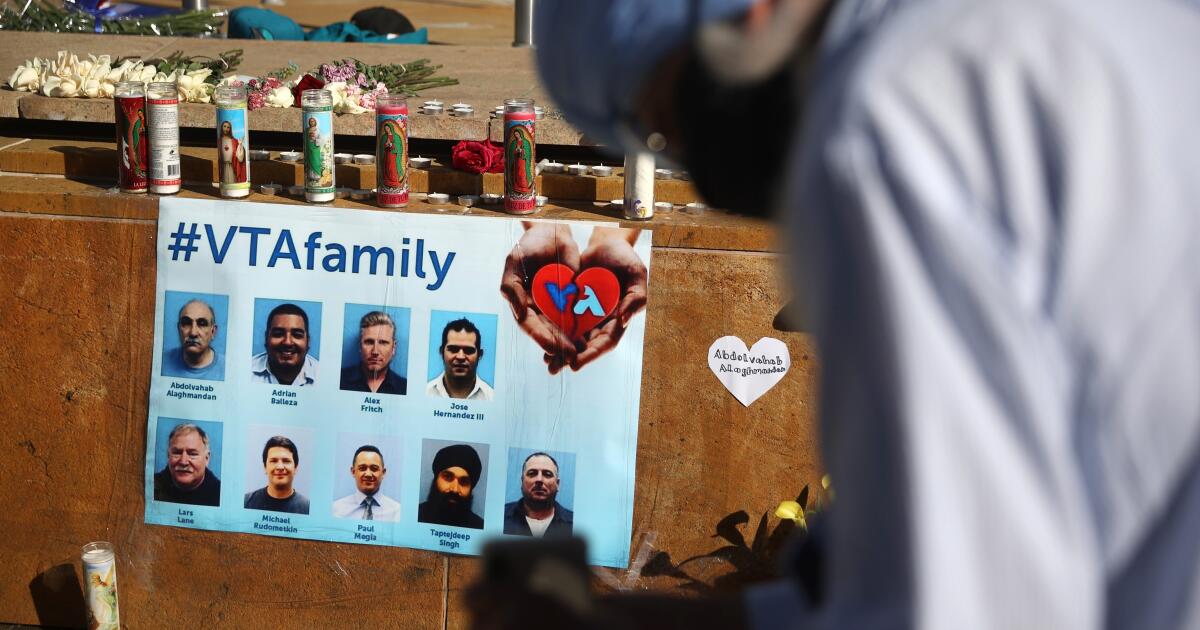
Beginning this month, California businesses will be required to have plans in place to prevent violence in the workplace.
Senate Bill 553, signed by Gov. Gavin Newsom last fall, requires that employers develop plans to protect workplaces from foreseeable threats of violence, which can range from bullying and harassment to active shooter and hostage situations. Under the law, employers were to have these comprehensive plans in place by July 1.
Here’s what you should know about the new law:
Who pushed for the workplace violence prevention law, and why?
State Sen. Dave Cortese (D-San Jose), who wrote the legislation, said he began looking into regulating workplace violence after a major shooting in 2021 at a light-rail yard roiled his district. In the incident, an employee killed nine colleagues at the Santa Clara Valley Transportation Authority before taking his own life.
Surveying the scene soon after the shooting, Cortese said he felt there could have been a clear plan for how workers might respond in such a situation. “It would have saved lives,” he said.
Cortese said the requirements outlined by the law took cues from a regulation the California Division of Occupational Safety and Health had been in the process of developing. Their safety standard, however, given their lengthy rule-making process and bureaucratic delays, probably would have taken several more years to get final approval.
More than half of such shootings in 2021 occurred in places of commerce, including grocery stores and manufacturing sites, according to the FBI.
SB 553 was backed by several unions, among them the United Food and Commercial Workers Western States Council. The union sought a law that would help address what it described as a rash of violent attacks at grocery stores and pharmacies, as workers were being pressured by their employers to crack down on shoplifting.
Grocery and other retail workers who interact with the public have long worried about violence in the workplace. Notably, they faced harassment and at times assault from customers who refused to comply with mask mandates in the early years of the COVID-19 pandemic. Fast-food workers also have complained of violent and dangerous customers.
Did anyone oppose the legislation? If so, why?
Industry groups such as the National Retail Assn. had vehemently opposed SB 553, arguing the paperwork would be overly burdensome for businesses.
They also took issue with a provision the bill had in its early stages that prohibited businesses from requiring nonsecurity employees to confront shoplifters and active shooters. That language was later removed. Eventually, the trade groups dropped their opposition.
What exactly is required under the law?
Legal experts said many companies had already started loosely addressing workplace violence concerns as mass shootings and other violent incidents dominated headlines over the years. The law helps to clarify employers’ obligations in this arena, experts said.
The law defines four types of workplace violence employers should try to prevent: violent action by a third-party person with no real reason to be at the worksite — essentially, a stranger showing up and harming an employee; violence by parties that are entitled to be there, such as customers, clients, patients or other authorized visitors; violence committed against employees by another employee; and violence by a third party who has a romantic or other personal relationship with an employee.
Under the law, most California businesses with at least 10 employees are required to have a policy document identifying potential violence and plans to deal with it — either as a standalone document, or as part of an existing injury and illness prevention policy.
They must also make workers aware of the violence prevention plan through annual training, and maintain a log of incidents of violence over a minimum of five years.
What else should I know about the law?
The law makes it easier for employees — or the unions that represent them — to get temporary restraining orders if they are threatened by a coworker or someone else in the workplace.
“That’s a big thing — most employees don’t get to choose who they work with or what happens at work,” said Ian A. Wright, a labor and employment attorney at Alston & Bird. “It gives employees an additional form of protection that they can go and seek themselves.”
Noncompliance could be met with civil penalties, and businesses that haven’t yet implemented the law are already several days past the deadline.
“My advice would be to get it done as soon as possible,” Wright said.
Business
NASA astronauts spend unexpected July 4 on the International Space Station

Astronauts Suni Williams and Butch Wilmore spent an unexpected Fourth of July aboard the International Space Station — but it was hardly a patriotic display of engineering prowess.
The two NASA astronauts docked with the orbiting lab June 6 for what was supposed to be an eight-day mission, but their return home may be delayed for months in what has become a star-crossed test flight for Boeing’s new Starliner capsule.
Not only was the launch of the spacecraft with astronauts aboard for the first time repeatedly delayed due to multiple problems, but NASA and Boeing are taking a cautious approach in returning the pair to earth largely due to five thrusters that malfunctioned during docking.
Four of the tiny engines that direct the craft in space are now working properly, but engineers don’t have a clear understanding of what caused the shutdown, so they have decided to conduct ground tests at NASA’s White Sands Test Facility in New Mexico, NASA officials said. The tests will put a Starliner thruster through its paces in a replicated space environment.
The delay also will allow engineers to further study a helium leak in the capsule’s propulsion system that was first detected prior to launch and worsened as Starliner made its way up to the space station roughly 250 miles above earth. The gas is used to pressurize the Starliner’s propulsion system.
However, both the company and space agency stressed at a press conference earlier this week that the astronauts are not stranded in space and, if need be, they could board Starliner and return to Earth immediately if there is an emergency aboard the space station.
“We’re not stuck on ISS. The crew is not in any danger, and there’s no increased risk when we decide to bring Suni and Butch back to Earth,” said Mark Nappi, manager of Boeing’s Commercial Crew Program.
Ken Bowersox, an associate administrator at NASA, said the delay will allow for the collection of more data and that there is no hurry to bring the astronauts back. “We have the luxury of time,” he said.
Before launch, NASA had said the batteries aboard Starliner were rated for 45 days but during the press conference they indicated they were performing well and would be rated to last another 45 days. On regular missions to service the station, Starliner would stay docked for six months.
NASA and Boeing also will not have a chance to examine the thrusters or investigate the helium leak when Starliner returns since the propulsion system is jettisoned before the return to earth.
Nevertheless, the desire to conduct ground tests expected to take weeks has highlighted yet again how far Arlington, Va.-based Boeing, the world’s largest aerospace company, has fallen behind Elon Musk’s Hawthorne upstart SpaceX — at least in the program to service the space station.
Both companies were given multibillion-dollar contracts in 2014 to develop their crafts, and since 2020 Elon Musk’s Hawthorne company has ferried more than half a dozen crews aboard its Crew Dragon capsule to the station — while Boeing has managed only two remote flights, including a first that failed to reach orbit and a second in May 2022 that docked with the orbiting lab.
The current mission with astronauts aboard was scheduled to launch last year but was delayed due to the need to replace flammable tape used extensively in Starliner and a second issue with the parachute system that will slow its descent for a ground landing in the Southwest.
Then, this year’s May 6 launch date was repeatedly delayed, at first due to a malfunctioning valve on the Atlas V rocket that launches Starliner into space. The workhorse rocket is manufactured by United Launch Alliance, a joint venture of Boeing and Lockheed Martin.
Additional launch dates were missed due to the helium leak, believed caused by a single defective seal, so software fixes were developed to work around it — but then additional leaks developed after the launch. However, NASA and Boeing officials says the craft has 10 times more helium than it needs to return to earth.
Boeing has reportedly had to absorb $1.5 billion in Starliner cost overruns, even as it continues to deal with the fallout from the two crashes of its 737 Max 8 jets in 2018 and 2019.
The company is weighing whether to plead guilty to a charge of fraud over allegations it misled regulators who approved the new, larger version of the 737, including how much flight training pilots would need, according to the Associated Press.
Boeing also announced plans this week to acquire Spirit AeroSystems, a key supplier it had spun off in 2005 as it moved to outsource more work on its commercial jets. Spirit supplied the fuselage of the Alaska Airline Max 9 that experienced a panel blowout Jan. 5 on its way to Ontario International Airport in San Bernardino County. Boeing’s chief executive called the acquisition “in the best interest of the flying public.”
Meanwhile, SpaceX last month was awarded a NASA contract worth as much as $843 million to build a spacecraft to guide the International Space Station out of orbit so it can burn up in the atmosphere when it is retired in 2030.
Bloomberg reported last month that the privately held company is now valued at a record $210 billion following a company tender offer to insiders that priced shares at $112.
Should Starliner get certified, the dismantling of the space station would leave the spacecraft with only a handful of scheduled service flights, prompting speculation that Boeing may end the program.
However, the company says it has plans for Starliner to service the Orbital Reef orbiting station in development by Jeff Bezos’ Blue Origin space company.
-

 Politics1 week ago
Politics1 week agoThe many faces of Donald Trump from past presidential debates
-

 World1 week ago
World1 week agoTension and stand-offs as South Africa struggles to launch coalition gov’t
-

 Politics1 week ago
Politics1 week agoFirst 2024 Trump-Biden presidential debate: Top clashes over issues from the border to Ukraine
-

 News1 week ago
News1 week ago4 killed, 9 injured after vehicle crashes into Long Island nail salon
-

 News1 week ago
News1 week agoSupreme Court denies Steve Bannon's plea to stay free while he appeals
-

 News1 week ago
News1 week agoVideo: How Blast Waves Can Injure the Brain
-

 Politics1 week ago
Politics1 week agoTrump says 'biggest problem' not Biden's age, 'decline,' but his policies in first appearance since debate
-
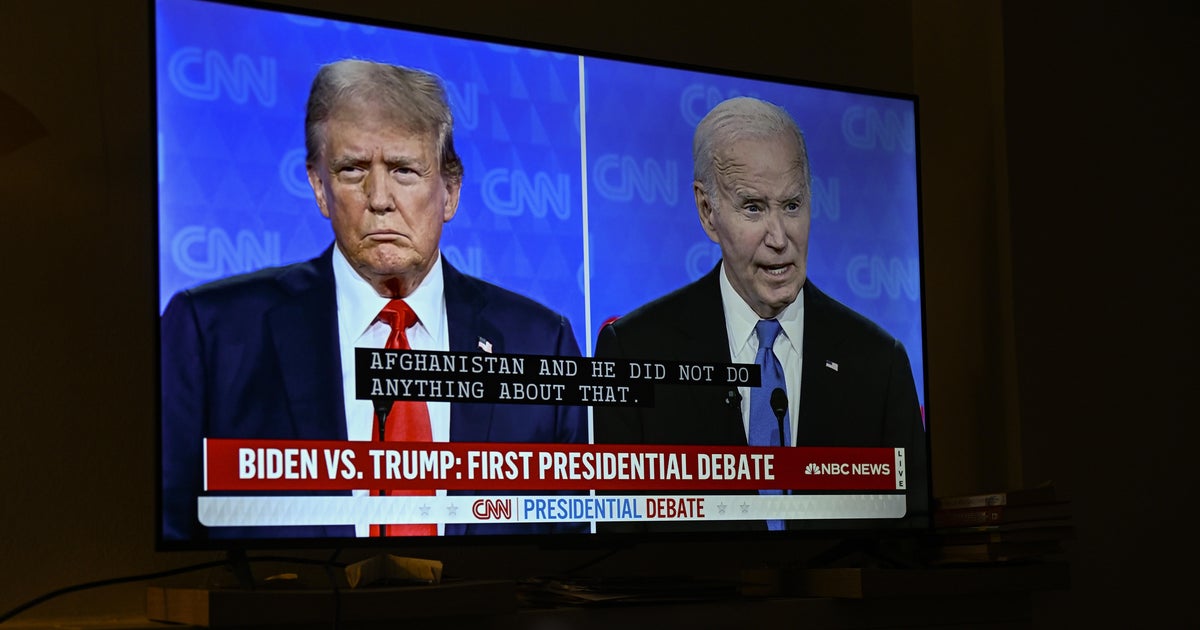
 News1 week ago
News1 week agoIncreasing numbers of voters don’t think Biden should be running after debate with Trump — CBS News poll











